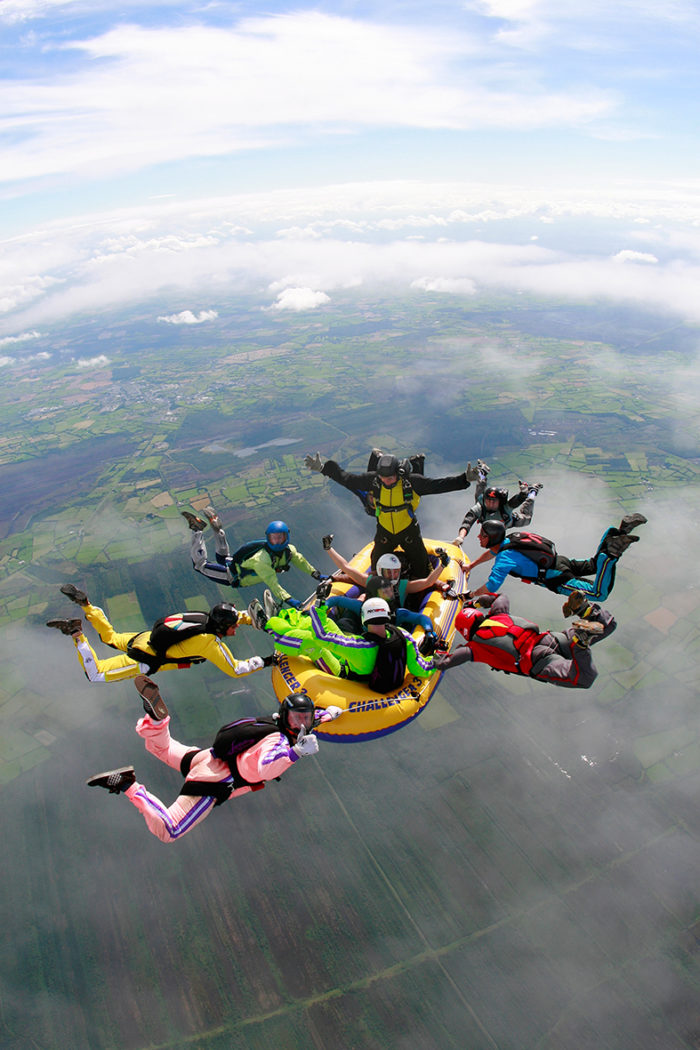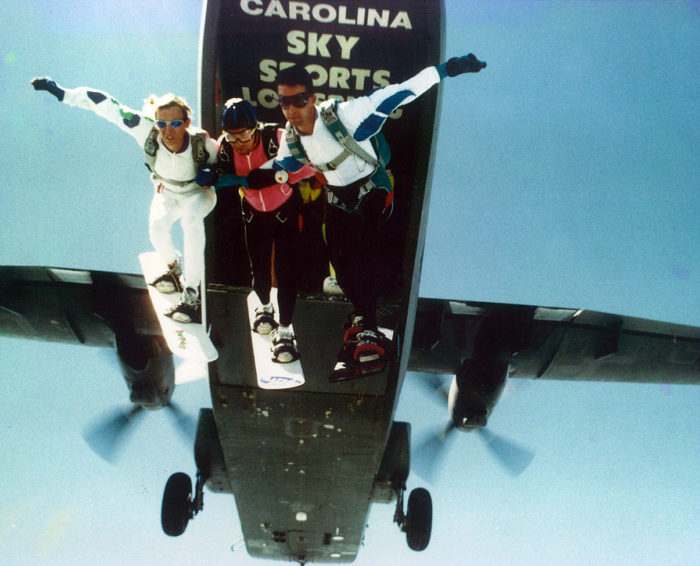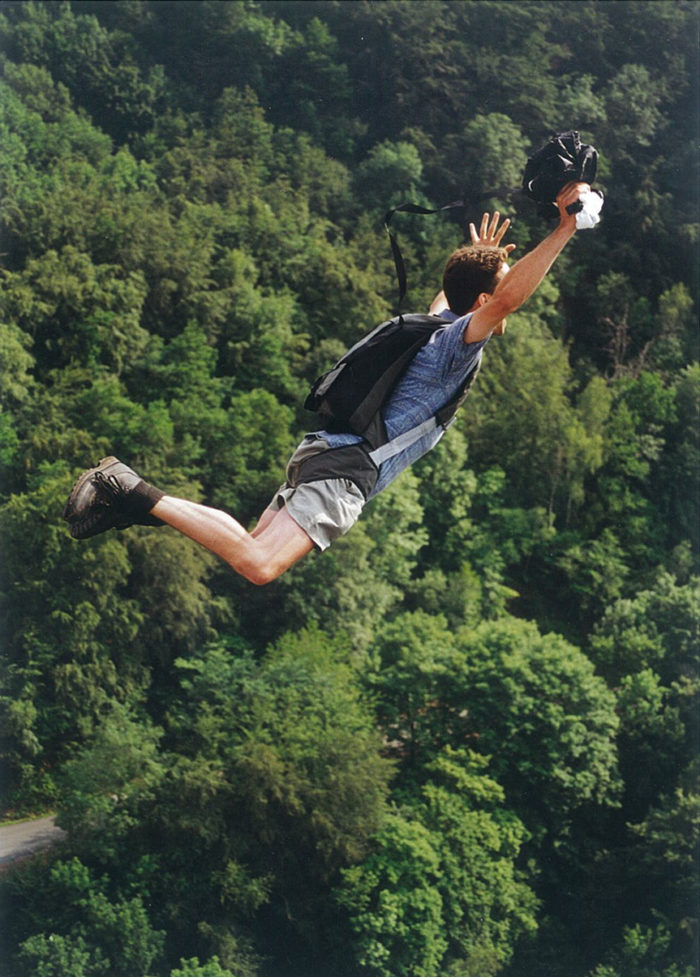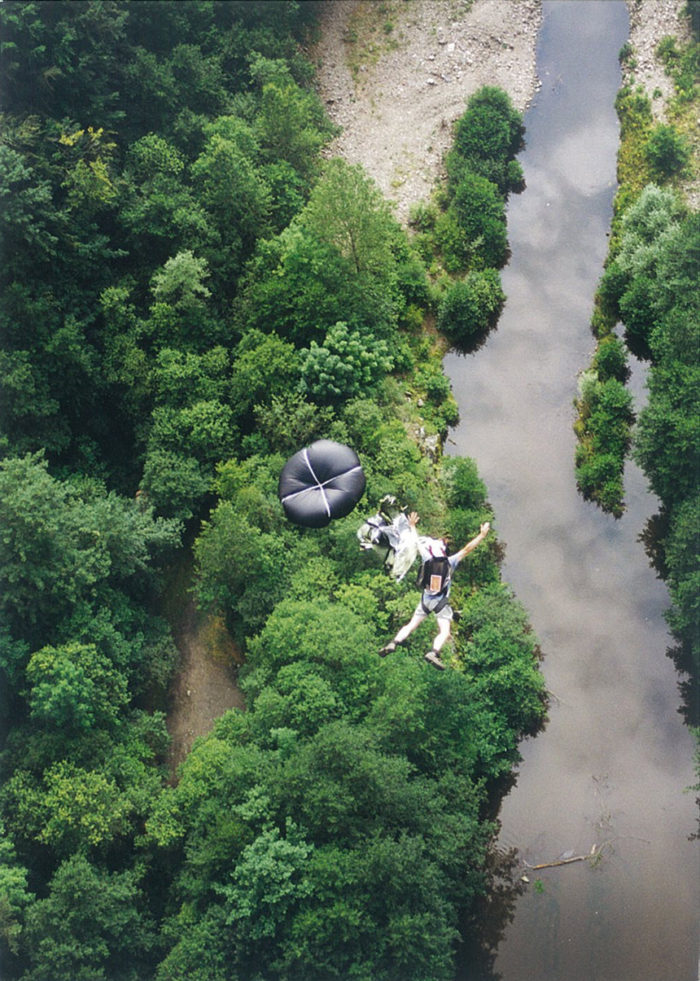As the door of the airplane slowly slid open, the buffeting noise of the air rushing by at over 150 mph combined with the drone of the propellers was almost deafening. He was sitting on the floor of a plane high above the ground and now only seconds away from making the biggest leap of his life.
He felt a fresh surge of adrenaline as the reality of what he was about to do for the very first time really hit home. The anxious wait for the signal to jump was unnerving, but like every challenge he had faced in his life up to this point, he knew that the preparation and commitment he had put into the training would stand to him.
Suddenly, the thumbs up. It was time to go ! He slid across to the open door and slowly put his legs out. He stood up, held on tightly and took a few deep breaths. Receiving last second advice from the instructor – more for reassurance than anything else – he felt the gentle tap on the shoulder. Now or never he thought. Don’t look down he had been taught, but that is easier said than done when you are hanging on to the edge of an aircraft at over 3,500 feet !
Leaning back and looking up, he jumped. The initial acceleration was incredible. The static line deployed his chute automatically (thankfully!), so he didn’t have to worry about pulling a cord at the correct altitude. The free fall was very brief but wildly exhilarating. With the main chute open he could enjoy the slow descent back down to earth. He was addicted instantly. He felt alive.
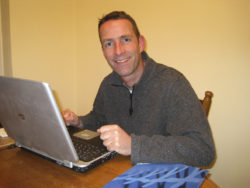 MEET Conor Heelan: full-time lecturer in printing and digital media, sky-diver, extreme athlete with Type 1 diabetes. That last detail may surprise you. After all, it’s not the kind of activity you might think a person with diabetes would do. This unstoppable and irrepressible man is tall, tanned, the picture of health and as you will probably already have gathered, he is not the type of person who is going to let the condition dictate how he leads his life. A globetrotting adrenaline junkie, a dog owner, a great conversationalist, he just might be the inspiration needed by a young person who is having difficulty accepting a diagnosis of diabetes. With over 3,000 sky-dives now under his belt, he also wake-boards, jumps off some extremely tall buildings (and things he shouldn’t be jumping off) and kite-surfs.
MEET Conor Heelan: full-time lecturer in printing and digital media, sky-diver, extreme athlete with Type 1 diabetes. That last detail may surprise you. After all, it’s not the kind of activity you might think a person with diabetes would do. This unstoppable and irrepressible man is tall, tanned, the picture of health and as you will probably already have gathered, he is not the type of person who is going to let the condition dictate how he leads his life. A globetrotting adrenaline junkie, a dog owner, a great conversationalist, he just might be the inspiration needed by a young person who is having difficulty accepting a diagnosis of diabetes. With over 3,000 sky-dives now under his belt, he also wake-boards, jumps off some extremely tall buildings (and things he shouldn’t be jumping off) and kite-surfs.
He was diagnosed with Type 1 diabetes aged 19 years while at college. He had a childhood friend with Type 1 and had a strong suspicion something was wrong when 2 stone fell off him in under 1 month and his eyesight became blurry especially after lunch. Finally he visited his doctor, admitting that he should have visited sooner, and was packed off immediately to Beaumont Hospital for diagnosis.
_______________________________________
What is Type 1 Diabetes: Type 1 diabetes is an Auto-Immune condition. It is caused by the body’s own immune system destroying the insulin-making cells (beta-cells) of the pancreas and tends to occur in childhood or early adult life. It will require daily insulin therapy. The four main symptoms of Type 1 diabetes are easy to remember:
Thirst: Excess drinking, unable to quench thirst
Toilet: Frequent urination, particularly at night
Tiredness: Lack of energy, sleeping more than usual
Thin – weight loss: Rapid weight loss over a short period
If these symptoms present themselves, immediate attention is needed. A simple blood glucose (finger prick) test by your GP can check for Type 1 diabetes
_______________________________________
Childhood
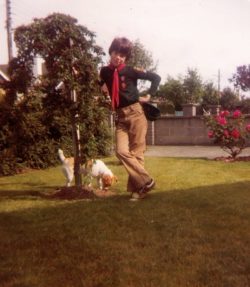 Conor is the youngest of 3 brothers and living beside the sea in Malahide, his parents encouraged their boys to befriend the sea. Aged 12, he joined the 100-strong, 9th Port Malahide Sea Scouts and every Wednesday he met his troop and began a love-affair with adventure. The troop travelled away many weekends and to this day Conor is amazed at the bravery of their Troop leader, Pat Hayes, who led them on treks and climbs of the highest mountains around Ireland from Donegal through the Galtee mountains and down to Kerry.
Conor is the youngest of 3 brothers and living beside the sea in Malahide, his parents encouraged their boys to befriend the sea. Aged 12, he joined the 100-strong, 9th Port Malahide Sea Scouts and every Wednesday he met his troop and began a love-affair with adventure. The troop travelled away many weekends and to this day Conor is amazed at the bravery of their Troop leader, Pat Hayes, who led them on treks and climbs of the highest mountains around Ireland from Donegal through the Galtee mountains and down to Kerry.
__________________________________
__________________________________
Diagnosis Upon diagnosis, Conor spent a week in Beaumont Hospital and recalls being surprised by how upset his tearful mother was with the diagnosis as he stoically prepared for battle. Conor is tremendously grateful to Dr Best and Dr Banting who produced ‘artificial’ insulin 95 years ago. Within days of receiving his first insulin injection, he felt back to himself again. The improvement was so dramatic that there was no going back. He met with the dietitian and quickly grasped which foods he needed to be careful with (foods that contain carbohydrates). He learnt how to inject and how much insulin he needed to inject to match the carbohydrate units he had eaten. This technique is known as carbohydrate counting and is taught by dietitians.
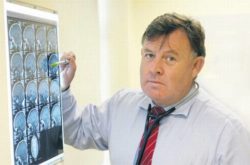 Conor felt very lucky to be under the supervision of Prof. Chris Thompson, who encouraged him to live his life to the full and not allow diabetes to overshadow or change his life. He has great admiration for his diabetes team at Beaumont and stays in regular contact with them.
Conor felt very lucky to be under the supervision of Prof. Chris Thompson, who encouraged him to live his life to the full and not allow diabetes to overshadow or change his life. He has great admiration for his diabetes team at Beaumont and stays in regular contact with them.
He returned to college life and briefly he tried to hide the condition. He gave an amusing example of being in a nightclub and going to the toilets to inject the insulin, with bouncers suspecting he was up to something else quite different! He tried to take his blood sugars privately but that meant he would not be testing as frequently so was less likely to learn to manage his condition well. So Conor made life-changing pledges to himself that have stood him in good stead ever since.
Life-long Pledges to Self
- To test frequently so he could control the condition and this meant testing in front of friends, strangers and family. He became open about his condition.
- He was never going to use his diabetes as an excuse to miss work or not do activities
- When he made new friends or took up new sports, he would mention his diabetes fairly early with minimum fuss. He has fully accepted his condition and finds others easily accept it also
- Maintains good friends around him who know what to do for him if his blood glucose levels drop
__________________________________
The difference between Type 1 and Type 2 was nicely described by Conor. With Type 1 you ‘wake up a diabetic” . Type 2 diabetes usually develops slowly in adulthood. It is progressive and can sometimes be treated with diet and exercise, but more often Type 2 diabetes may require antidiabetic medicine and/or insulin injections. More detail on the differences here
________________________________
Exercise & Activities
Conor loves his lecturing job and as it is relatively stress-free, it helps him control his diabetes. It also offers him the flexibility he wants to be able to pursue all his sporting activities.
 His greatest challenge started when he returned to hiking. He loves hiking, covering 13 to 16 miles per hike. Despite a back-pack full of food and a supply of insulin, he ran the risk of serious hypoglycaemic events. His friends were well-versed on the symptoms to look out – “I am like I am drunk but not in a good way”, confused and not making sense. However within 5 to 10 minutes, his supply of jellies, administered by friends, had him back on track. Gradually he educated himself on the effects of hard exercise on his body and how to adjust his insulin accordingly. His brother was later diagnosed with Type 1 diabetes aged 25 and Conor was able to help him with his learning experience so that he could continue his triathlons and maintain a stressful job and busy life. In fact, Conor did some talks for a pharmaceutical company explaining how he learnt to adapt his injection routine to allow him to maintain his active lifestyle.
His greatest challenge started when he returned to hiking. He loves hiking, covering 13 to 16 miles per hike. Despite a back-pack full of food and a supply of insulin, he ran the risk of serious hypoglycaemic events. His friends were well-versed on the symptoms to look out – “I am like I am drunk but not in a good way”, confused and not making sense. However within 5 to 10 minutes, his supply of jellies, administered by friends, had him back on track. Gradually he educated himself on the effects of hard exercise on his body and how to adjust his insulin accordingly. His brother was later diagnosed with Type 1 diabetes aged 25 and Conor was able to help him with his learning experience so that he could continue his triathlons and maintain a stressful job and busy life. In fact, Conor did some talks for a pharmaceutical company explaining how he learnt to adapt his injection routine to allow him to maintain his active lifestyle.
Conor kept in contact with Pat Hayes and when Pat decided to do a sky dive, Conor decided he would too. His addiction to the sport started from there at the Irish Parachute Club which has an active membership in Edenderry, Offaly. But the question was, what did he have to do to be able to keep doing this? Conclusion – tightly manage his diabetes. There are 101 things that affect blood sugar levels and adrenaline is high on this list. Adrenaline and cortisol are hormones produced by the body when we are stressed, exercising hard, feeling fearful, anxious or excited. These hormones release stored sugar into the blood steam putting demands on the body’s glucose management system. Conor’s glucose management system relies entirely on artificial insulin to convert this glucose and his timely intake of food.
Through self-experimentation and help from his diabetic team, Conor worked out the background insulin needed to maintain a good HbA1c result and he worked out the best approach for him personally. All people with diabetes react differently to insulin, and at different times of the day therefore a level of self-experimentation is required by everyone which is why Type 1 diabetes, more so than any other condition is PERSONAL.
Funding Conor’s new passion was also important. Initially jumps are expensive but overtime he invested in the equipment and jumps are now about €25. Later he began to explore other high-octane activities. He was amongst the first to BASE jump (Build Antenna Span Earth) in Ireland. With 3 others from the Irish Parachute Club, they used the internet to learn how to pack a parachute so that it would open in time for the low altitudes that are common in BASE jumping and then they headed to France to try some serious jumps. Through the internet they met a French pioneer of base-jumping who was a little further ahead of them in experience. Luckily, Francois reviewed their equipment and quickly lent them his gear and diverted them to easier jumps such as a bridge rather than a cliff they had selected! As their confidence grew they bought the proper equipment and shared their knowledge with other Irish jumpers.
In 1999 in Hawaii, Conor saw kite-surfing for the first time and again was amongst the first to try this sport in Ireland, finding the right equipment and involving others. PureMagic.ie have a popular Kite-surfing school on Dollymount strand, northside Dublin. For Wakeboarding, there is a fantastic sporting facility in Grand Canal dock, in Dublin centre, called Wakedock where kids and adults can learn to surf the water drawn by a cable line
Visit www.wakedock.ie
Today, Conor travels throughout the United States and Europe enjoying his activities and living his life to the max. He truly is an inspiration to any young child or adult who may be struggling with the diagnosis of diabetes. A doctor could have advised Conor to avoid these adrenaline-producing activities but Dr Thompson supported Conor and encouraged him to live life to the full by learning to tightly control his diabetes. Conor has succeeded in doing this and as a result, he is very happy, healthy and positive.
Of course, not everyone will feel like sky diving or BASE jumping and not every parent will embrace this type of activity for their child. Conor encourages everyone to do as he did, to find a passion in life that occupies a large proportion of their thinking time and supersedes any negative thoughts that diabetes can bring. Conor’s message is this: if you love something enough, you WILL find a way of making it happen and you will be motivated to manage your condition well so that you too can pursue your passion.
Life is there to be lived so, like Conor, go for it !



